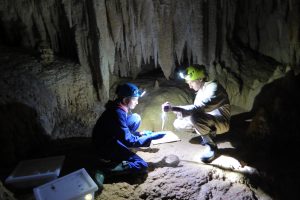We´d like to invite everybody interested in innovative and quantitative methods for continental palaeoenvironmental reconstructions to attend our short course (details below) at the General Assembly of the European Geosciences Union, 8-13 April 2018.
SC1.10/CL6.06/GM12.4/SSP2.20 Age Models and geochronology: An introductory course to different age-depth modelling approaches (co-organized) Convener: Carole Nehme Co-Conveners: Sebastian F.M. Breitenbach , Michael Dietze , Annegret Larsen Abstract: In an era of science that uses numerical models to better understand physical processes occurring on Earth, there is an increasing demand for robust empirical datasets to constrain these simulations. Generating robust datasets, especially data sets that express stratigraphic positions of sedimentary deposits as ages, often involves the use of multiple, independent geochronological techniques (e.g. different kinds of radioisotopic dating, magneto-, bio-, cyclostratigraphy and sedimentologic relationships along the succesion). The integration of these different kinds of geochronological information often poses challenges. Age-depth models are the ultimate result of the integration of different geochronological techniques, and range from linear interpolation to more complex Bayesian techniques. Invited speakers Christian Zeeden and David De Vleeschouwer will share their experience in several modelling concepts and their application in a range of paleoenvironmental and paleoclimatic records. The Short Course will provide an introduction to the field of (Bayesian) age-depth models and will highlight the assumptions, benefits and limitations of different model approaches. It will prepare the participants from CL, GM and SSP divisions for independent application of suitable age-depth models to their data.
We hope you will enjoy this short course.
Please feel free to contact us if you have any questions.
Hope to see you in Vienna and
Merry Christmas!
Seb, Carole, Michael and Annegret
Short course page at the EGU website:
http://meetingorganizer.copernicus.org/EGU2018/session/28970
